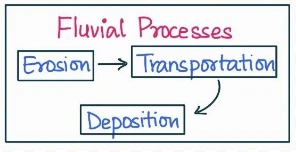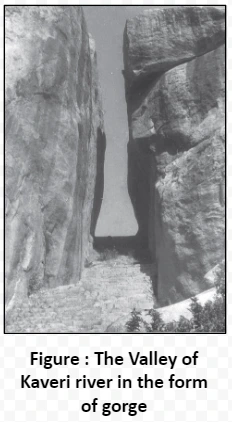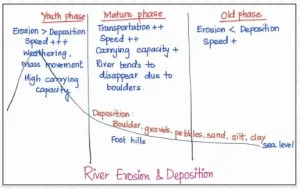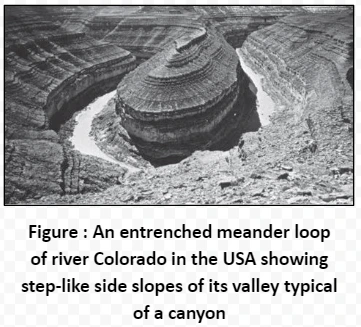![]() 1 Dec 2023
1 Dec 2023
Landforms are the different shapes and features on the Earth’s surface, and they change over time because of things like water, wind and other natural forces, creating a constantly evolving landscape.
In this chapter, we will study different geographical agents which play a major role in forming these features.
Let’s study these geomorphic agents and explore the features caused by them in detail.

Landforms formed due to running water develops in 3 stages:



Landforms, crafted by nature’s forces, evolve through stages – from youthful valleys to mature floodplains. Rivers, potent geomorphic agents, shape landscapes, leaving behind valleys, gorges, and canyons. A tale of Earth’s changing surface, etched by time and nature’s forces.
<div class="new-fform">
</div>
